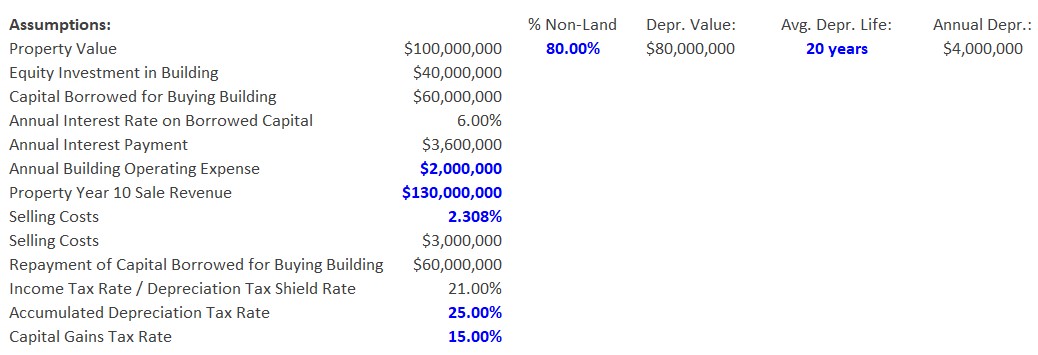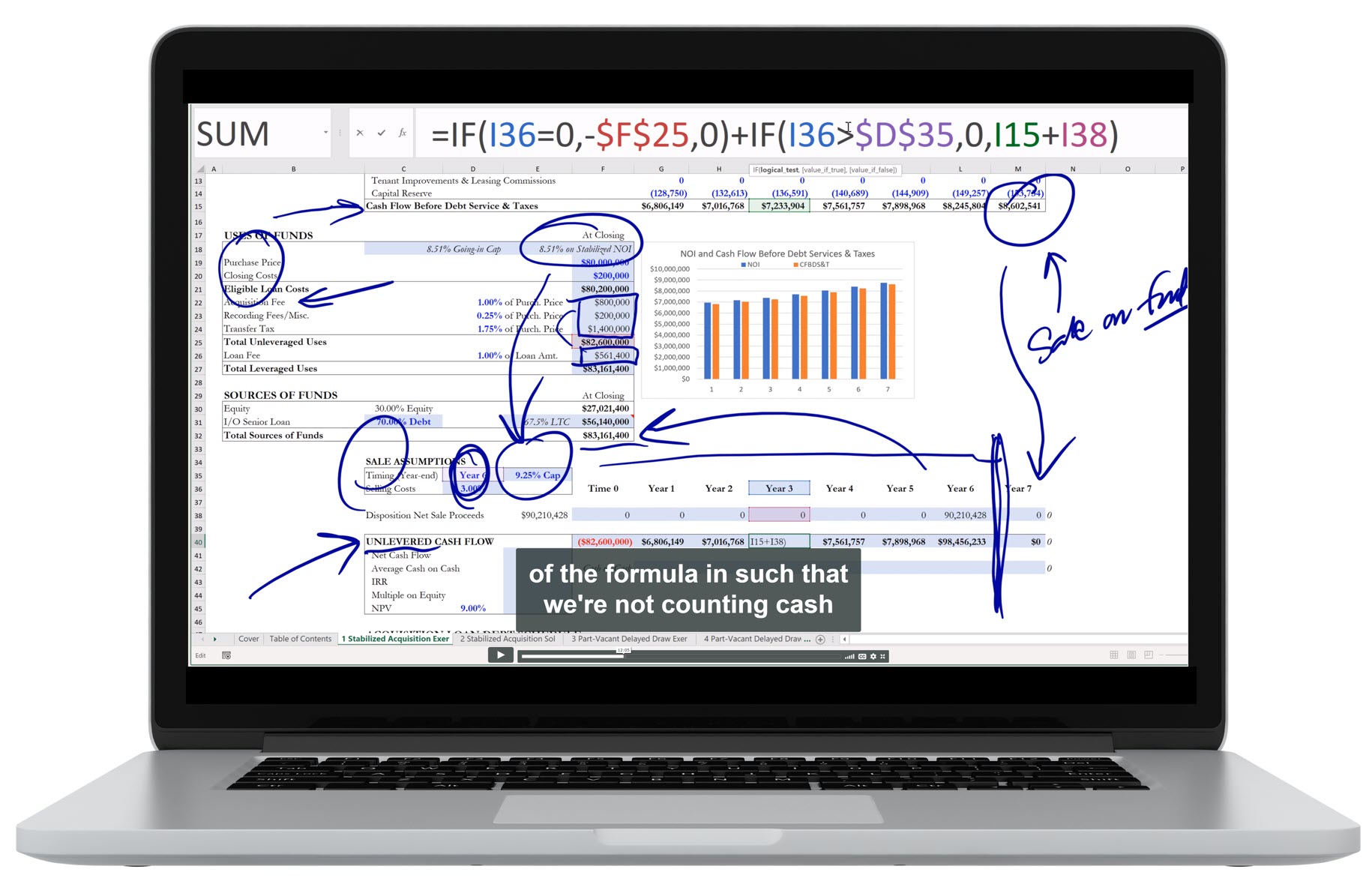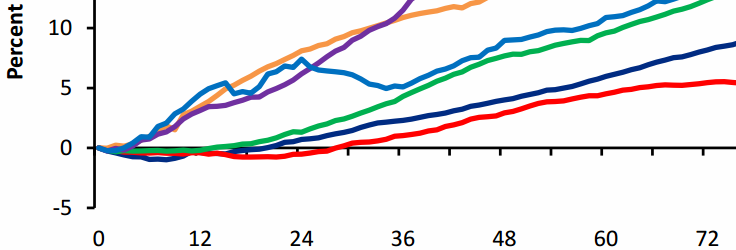Overview
Listen to this narration if you prefer
The chapter discusses the factors corporations and firms evaluate when selecting their operating space, reveals faults in a commonly applied own-versus-lease analysis framework, and provides a corrected version of the analysis.
Summary
The location, size, and type of space preferred by users differs based on their needs. Operations that require a large distribution warehouse, for example, will look to minimize transportation costs and have efficient loading docks. As a result, warehouses will generally be located near major highway interchanges. Offices that serve suburban clientele will often locate in office parks, a convenient location for interfacing with other businesses.
Market conditions influence space usage. For instance, when market vacancy is high and market rents are low, tenants can stock up on “discounted” space, growing into it over time. By leasing space to house future expansion, a business can both capitalize on the cheap rents and improve their space quality.
Firms must decide whether to own or lease their space. The chapter walks students through the flawed traditional “own-versus-lease” analysis, noting how the model is incorrect in that it incorporates depreciation and operating costs but ignores the opportunity cost of capital committed to real estate ownership. The result of this analysis is generally that the firm should own its space. A corrected analysis which incorporates the opportunity cost of capital is presented, and it reveals that the rental option is generally the better option. However, each corporate real estate decision depends on the returns of the firm’s core business, the nature of the specific real estate market, the type of real estate, and the firm’s income tax profile.
Students should realize that they are also the “CEO of themselves,” and that while they may perceive a future primary residence as an investment, a house first and foremost serves the function of providing safety and shelter. If acquired with a mortgage, it will also provide the bonus of a tax shield from the interest payments. While NPV analyses enable you to compare the value of owning versus renting a primary residence, all of the academic models ultimately fall short because the modeling constraints are unrealistic and there is no variable for “emotion,” which often plays into the homeownership decision in a significant way.
Question
This is the type of question you’ll be able to answer after studying the full chapter.
Should Douglas Co. lease or rent their new headquarters for the next 10 years? Douglas Co. is a multinational firm that provides consulting services to clients around the world. The company has a 12% expected return on its invested capital. Recently the firm has enjoyed an expansion in their clientele and is increasing their employee count. With growth in size, management feels that the firm needs to move into newer and bigger offices and is exploring options. Gil Ron, VP of Development, was recently approached by a local realtor, who presented him with prime office space for rent in downtown Miami, available for immediate occupancy. The space he proposes is a single-user Class A office building with all of the high-end amenities demanded by management. Gil felt that the space is suitable and decided to make the case at senior management’s next meeting. The details for the rental option are as follows:

Surprisingly, a few days after receiving the rental proposal, Gil was approached again regarding the same space, this time with an offer to purchase the space for $100 million. Intrigued by the idea, Gil decided to present management with both options at management’s next meeting. The details for the purchase option are as follows:

Should Gil recommend the own or rent option?
Audio Interview
Corporate headquarter sale-leasebacks and psychic value (6:56)
BRUCE KIRSCH: Every business has some real estate exposure because they need physical locations from which to operate. Recently, we’ve seen two very high-profile public companies– Nokia and Sony USA– both announce the sale of their corporate headquarters buildings, where they’re each the sole tenant. They’re not vacating the properties, but rather are going to lease the space back from the new third-party owners in what’s commonly known as a sale-leaseback transaction.
So this isn’t a new type of transaction. But what makes it interesting is the timing here. Both of these companies are currently struggling somewhat financially, and both of their stock prices have been on a decline for the last four or five years. And naturally, from the sale of these very prominent properties, both companies are going to be unlocking massive amounts of cash for their corporate use.
And so you make the point in the textbook that among the corporate real estate community, there is, or at least there used to be, a big misconception, or perhaps oversight, about the value of a company owning its own properties instead of leasing them, and deploying the cash that would be locked up if they were to own them towards what they do best.
So what do you think about these recent events? How did the corporate real estate community react when you put this theory out there? And why do some companies still insist on owning their own buildings?
PETER LINNEMAN: Well, let’s take them in a slightly different order. How did the corporate real estate community react when I put this out? And I’ve put this out a number of times in different ways.
The answer is some clearly get it. They get it in a hurry, and take actions. And let’s face it. There’s a tremendous amount of real estate, particularly in the United States, less so outside the United States, that is leased. So clearly, lots and lots, quote, “get it.”
On the other hand, there are some who decide to own it. Some, I think, own it on very flawed analysis. They do it on an analysis that does it as an out of pocket cash exercise, but they ignore the fact that they’re tying up huge amounts of capital that have higher and better use.
And that higher and better use is the real cost of tying up your money in corporate real estate. Every dollar you put into corporate real estate is a dollar you could have put to use in your core business. And for almost all companies, risk adjusted, the business you’re a specialist in, you should earn more at than an ancillary business like corporate real estate.
There’s a whole bunch of people who either do flawed analysis or just don’t think about it– sort of they’re too busy doing their business to worry about what’s the right way to finance themselves. They build their facilities. They’re flush with cash. They’re doing great.
They have a corporate ego, a corporate image. They want to nurture that. They want their buildings. And most of the buildings are built by companies when they’re really flush, really doing great.
Now, you come to the dispositions you were talking about. Most of the dispositions are done when they are not flush with cash, when their financing options have been weakened, their operating options have been weakened. And suddenly, they’re not too busy to think about, what’s the right way to own it?
And then they actually start doing the analysis too late. But they start doing the analysis. And suddenly, they find, gee, why am I tying up all this money in real estate? I could be using it somewhere far more productively like my core business.
Unfortunately, by the time they realize it, they’ve given up a fair amount of value, because the core competency is eroded, and therefore, their credit quality is eroded, and therefore, the value they can get for their lease is eroded, versus if they had done it in the best of times. Doing it in the worst of times is never when you want to do it.
So in my mind, the fact that companies, when they are not flush, when they’re really struggling, either in their operating business or their financing business, turn to real estate disposition, sale-leasebacks, et cetera, really underscores the fact that most businesses should have always been doing it. It’s just got to the point where they really have to focus on what they should be doing.
It’s a little like, we should always be eating better food. It’s only after you have a heart attack that you then really examine, does that increase my cholesterol intake? I should have been worried about that all the time. But I really focused on it after the heart attack. And the sad thing is, you should have really been focusing on it before the heart attack. You’d have probably had less chance of the heart attack.
And I think the supplement B to chapter 19 is a really good, simple, mathematical, disciplined approach to how to think about the own versus lease and under what situations. And I think it really captures that it doesn’t dominate for everyone, but it does dominate for everyone normal in their business activities. And therefore, it should be lease unless I’m special, should be a kind of rule of thumb for corporate real estate.
BRUCE KIRSCH: To what extent do you think that the psychic value and the ego element comes into play with owning your own headquarters, let’s say?
PETER LINNEMAN: Huge. And you know it because you see companies tying up massive sums in their headquarters. And then you’ll find they lease their warehouses. Well, there’s no ego value in owning a warehouse. And yet, the use of capital is every bit as relevant for money tied up in a warehouse as it is money tied up in a corporate headquarters.
And I think the psychic or ego or image, whatever you want to call it, is huge on the office building, zero on the warehouse. Therefore, you see a lot more warehouse space being leased than office space in that regard.
Excel Figures
Key Terms
To view the definition, click or press on the term. Repeat to hide the definition.
The difference between gross and net leasable footage.
Allows a company with an economic and tax ownership position to hide the ownership (and the accompanying debt) from shareholders.
Chapter Headings
- What Type of Space Do I Need?
- Where Should I Locate?
- How Much Space Do I Need?
- Should I Own or Rent?
- Faulty Own Versus Rent Model
- What Is The Problem?
- Corrected Own Versus Rent Model
- One Size Does Not Fit All
- Propensity for Corporate Ownership of Real Estate
- Synthetic Leases
- For How Long Should I Lease?
- The Corporation of You







